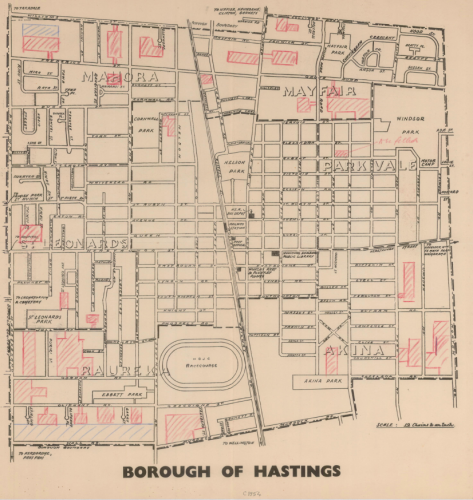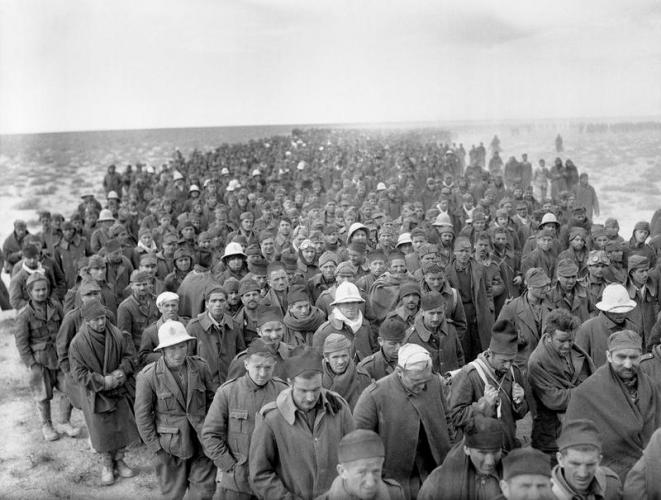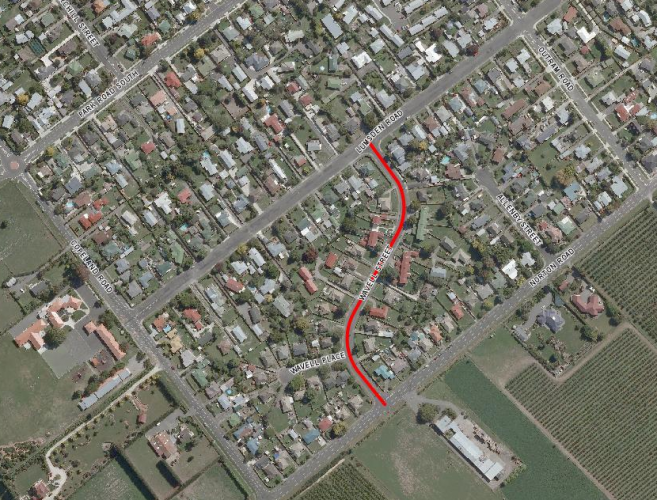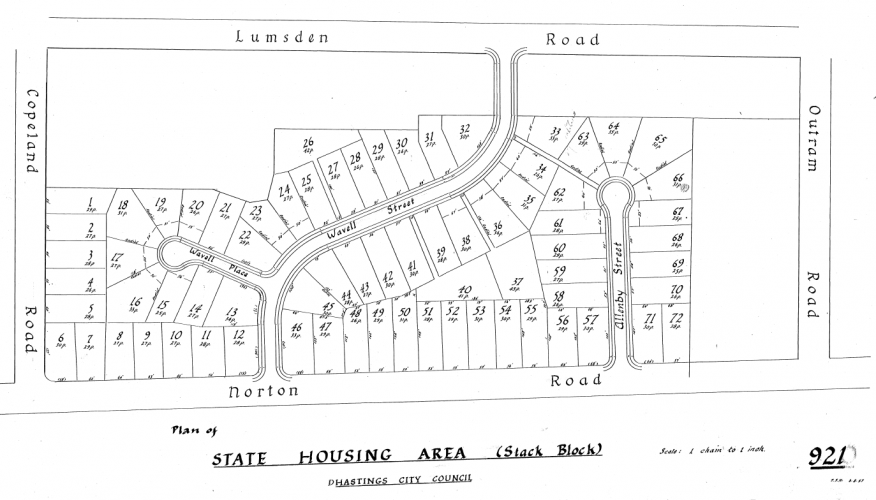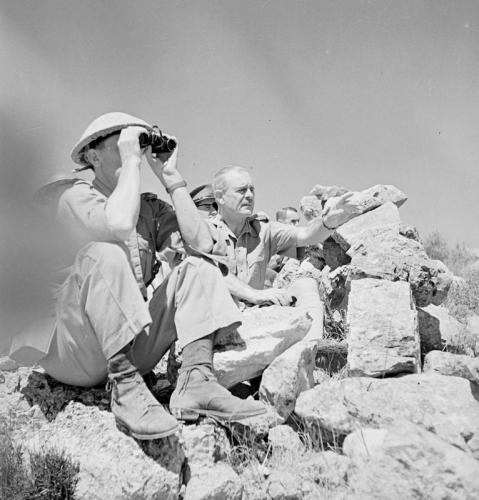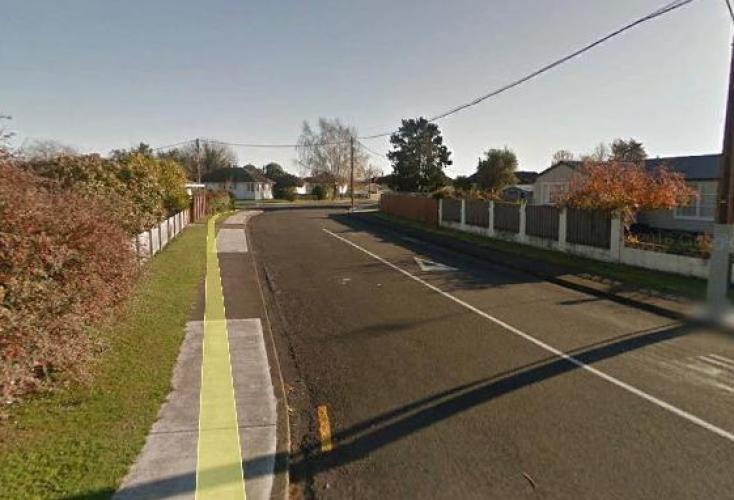045 Wavell Street Hastings, street view
Reason for the name
This street was named in honour of WW2 Field Marshall Archibald Percival Wavell, 1st Earl Wavell GCB, GCSI, KStJ, CMG, MC, PC
Wavell Street and Wavell Place are located in the (actual) South West of Hastings, but the grid system does not align to North-South / East-West. Wavell Street / Place comes off Norton Road in the suburb of Akina and was developed around the same time as Allenby Street (also named for a Field Marshall who served in the Boer War and WWI, and in Wavell’s case also WWII). The names for new streets Allenby Street, Wavell Street and cul-de-sac Wavell Place were decided in 1957. Hastings has several clusters of military-related names.
Wavell Street / Place was developed at the same time as Allenby Street (also named for a Field Marshall who served in the Boer War and WWI, and in Wavell’s case also WWII). Hastings has several streets named for Field Marshalls. Wavell served under Allenby, and wrote a biography of him, Allenby: A Study in Greatness. By General Sir Archibald Percival Wavell. Oxford University Press.
Authors: Helen Gelletly and Cherie Flintoff (Hastings District Council) and John Osborne
Field Marshall Archibald Percival Wavell, 1st Earl Wavell GCB, GCSI, KStJ, CMG, MC, PC (5 May 1883–24 May 1950) was a senior officer of the British Army.
He served in the Second Boer War, the Bazar Valley Campaign and the Great War (WWI), during which he was wounded in the second battle of Ypers losing his left eye and winning the Military Cross.
In June 1917 The Chief of the Imperial General Staff (CIGS) Field Marshall Sir William Robert Robertson appointed then Brevet Lieutenant Colonel Wavell as his personal liaison officer with General Allenby, Commander-In-Chief of the Egyptian Expeditionary Force. Wavell credits Allenby with teaching him about command in the desert, the value of surprise and deception, the importance of scrupulous attention to detail and logistics, the art of instilling confidence in demoralised troops, developing a well-honed staff HQ and the value of personal example – Allenby moving the General HQ out of Cairo closer to the troops. Wavell himself was well thought of by officers and soldiers.
Towards the end of WWI Wavell spent time in Versailles, but found himself unsuited to the politics and machinations there and requested a transfer.
Wavell was well-thought of, with one contemporary General Vesey reporting that the only time he heard him criticised by a senior officer was in the early 1920s when then CIGS Sir George Milne referred to him as a menace, due to Wavell and others pressing for speedier mechanisation of the Army (a view Milne himself came around to later and which proved itself to be well-founded).
As well as working for the War Office between the wars Wavell also spent time writing and lecturing. His style and clarity in contributions to the Encyclopaedia Brittanica were lauded by then Military Editor Liddell Hart. He had a strong belief in mobility and firepower, with ongoing respect for the role of infantry – but not as cannon fodder.
He valued commonsense and cunning and was prepared to listen to and acknowledge others ideas. A quote from one of his lectures, that was innovative for its time, when conservatism was strong, is: the “ideal officer must be afraid of nothing, not even of a new idea.”
In June 1930 Wavell was given his own command, 6th Infantry Brigade. He and his 2IC designed innovative training exercises designed to be realistic, to train subordinate commanders and their soldiers to ensure the blunders and chaos of battles in WWI were never repeated. He was promoted further and in 1938 was given the role of Southern Command over several senior officers.
Wavell was at times taciturn and his refusal to be political sometimes did not stand him in good stead. He and Churchill did not get along well, and Churchill often (mistakenly) regarded him as unwilling to fight, when instead he was clear in assessing what was and was not possible (although his planning, cunning and use of mobile forces made things possible that others in many cases would not have assessed as such).
He served in the Second World War, initially as Commander-in-Chief Middle East. While waiting the chance to act, Wavell planned and in assessments in May 1940 was prescient in his predictions of potential worst case scenarios about the wider war.
While on paper Wavell’s small forces should have been beaten without firing a shot, he used Long Range Patrols and other tactics to torment the Italian Army and give the impression of far greater forces than he had.
The Long Range Desert Group (LRDG) was a reconnaissance and raiding unit of the British Army during the Second World War. The commander of the German Afrika Corps, Field Marshal Erwin Rommel, admitted that the LRDG "caused us more damage than any other British unit of equal strength".
Originally called the Long Range Patrol Group (LRPG), the unit was founded in Egypt in June 1940 by Major Ralph A. Bagnold, acting under the direction of General Archibald Wavell. Bagnold was assisted by Captain Patrick Clayton and Captain William Shaw. Bagnold was given 150 New Zealand volunteers, most of whom had a farming background. Bagnold believed that they would be more adept at surviving and at maintaining vehicles in a difficult environment should mechanical problems occur.
The New Zealanders were later joined by Rhodesian and British volunteers, whereupon new sub‐units were formed and the name was changed to the better‐known Long Range Desert Group (LRDG). The LRDG never numbered more than 350 men at one time, all of whom were volunteers. It specialised in quick offensive manoeuvres, going in and out and causing the most damage in the shortest time possible. The LRDG was nicknamed "the Mosquito Army", by Wavell. Special Air Service soldiers would refer to it as "the Libyan Desert Taxi Service".
The NZ Army erected a permanent memorial to the LRDG at the NZSAS barracks, in the Papakura Military Camp. On 7 August 2009, two honour boards containing details of every New Zealand soldier who served in the LRDG were unveiled.
Wavell mounted successful offensives into Libya (Operation Compass) in December 1940 and Eritrea and Ethiopia in January 1941. By February 1941, his Western Desert Force under Lieutenant General Richard O'Connor had defeated the Italian Tenth Army at Beda Fomm and appeared to be on the verge of overrunning the last Italian forces in Libya, which would have ended all direct Axis control in North Africa. The Western Desert Force had about 30,000 men, against the Italian 10th Army’s approximately 150,000 men in fortified posts around Sidi Barrani and in Cyrenaica. The British took 138,000 Italian and Libyan prisoners, hundreds of tanks and over 1,000 guns and aircraft for a loss of 1,900 men killed and wounded, about 10 percent of their infantry.
Wavell’s totally inadequate force numbers and equipment did well fighting multiple fronts, with some his forces diverted, against his wishes, to Greece and other forces diverted to also fight in Iraq on the insistence of Churchill. The Germans were given the opportunity to reinforce the Italians in North Africa with the Afrika Korps and by the end of April the weakened Western Desert Force had been pushed all the way back to the Egyptian border.
Churchill came to the view that:
“I have come to the conclusion that a change is needed in the command of the Middle East. Wavell has a glorious record, having completely destroyed the Italian Army and conquered the Italian Empire in Africa. He has also borne up well against the German attacks and has conducted war and policy in three or four directions simultaneously since the beginning of the struggle. I must regard him as our most distinguished general. Nevertheless I feel that he is tired and that a fresh eye and an unstrained hand is needed.”
Wavell’s successor General Auchinleck wrote of the situation on his arrival. “Not only was I greatly impressed by the solid foundations laid by my predecessor, but I was also able the better to appreciate the vastness of the problems with which he had been confronted and the greatness of his achievements, in a command in which some 40 different languages are spoken by the British and Allied Forces."
Wavell was transferred in a swap with General Auchinleck to become Commander-in-Chief, India, from July 1941 until June 1943 (apart from a brief tour as Commander of ABDACOM). He then served as Viceroy of India, supporting a rather more liberal view of working towards independence than some back in England, until he was replaced by Lord Mountbatten in February 1947.
In 1947 Wavell returned to England and was made High Steward of Colchester. The same year, he was created Earl Wavell and given the additional title of Viscount Keren of Eritrea and Winchester. Field Marshal Archibald Percival Wavell, 1st Earl Wavell died on 24 May 1950.

